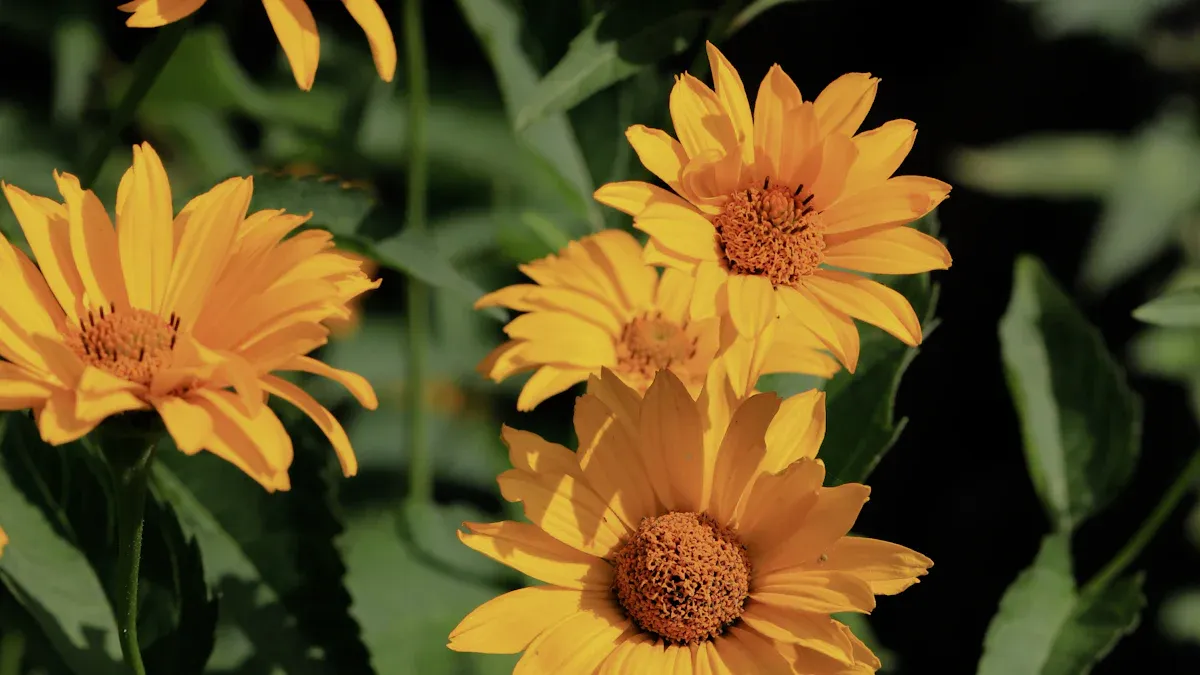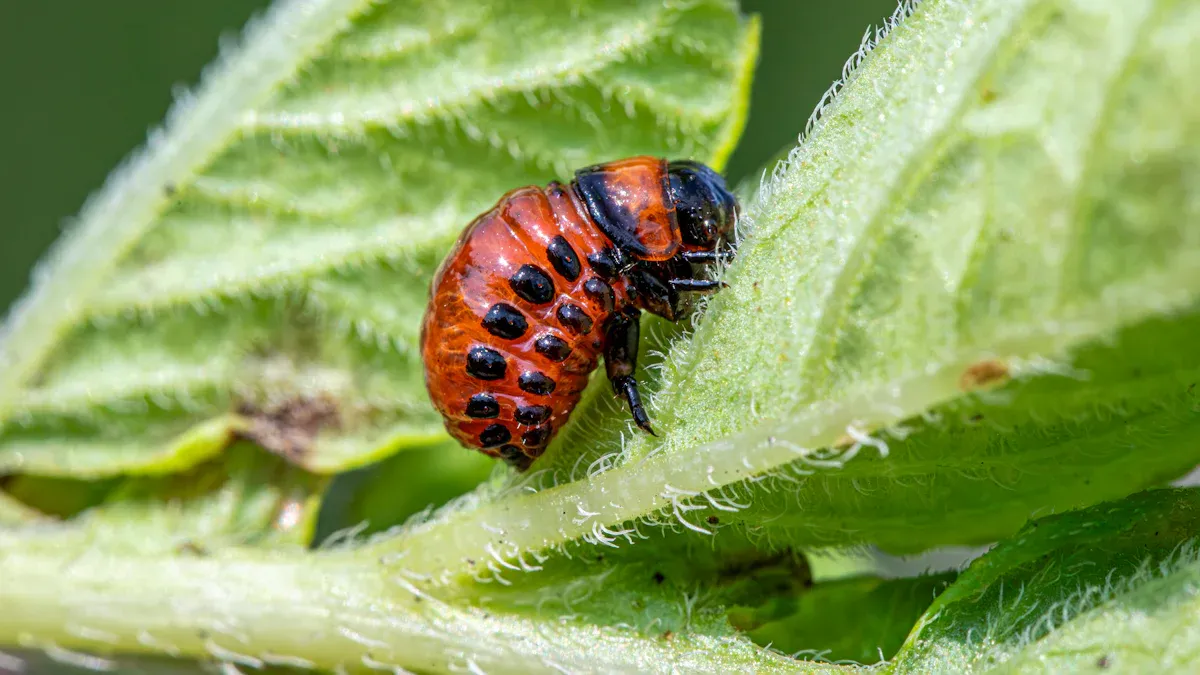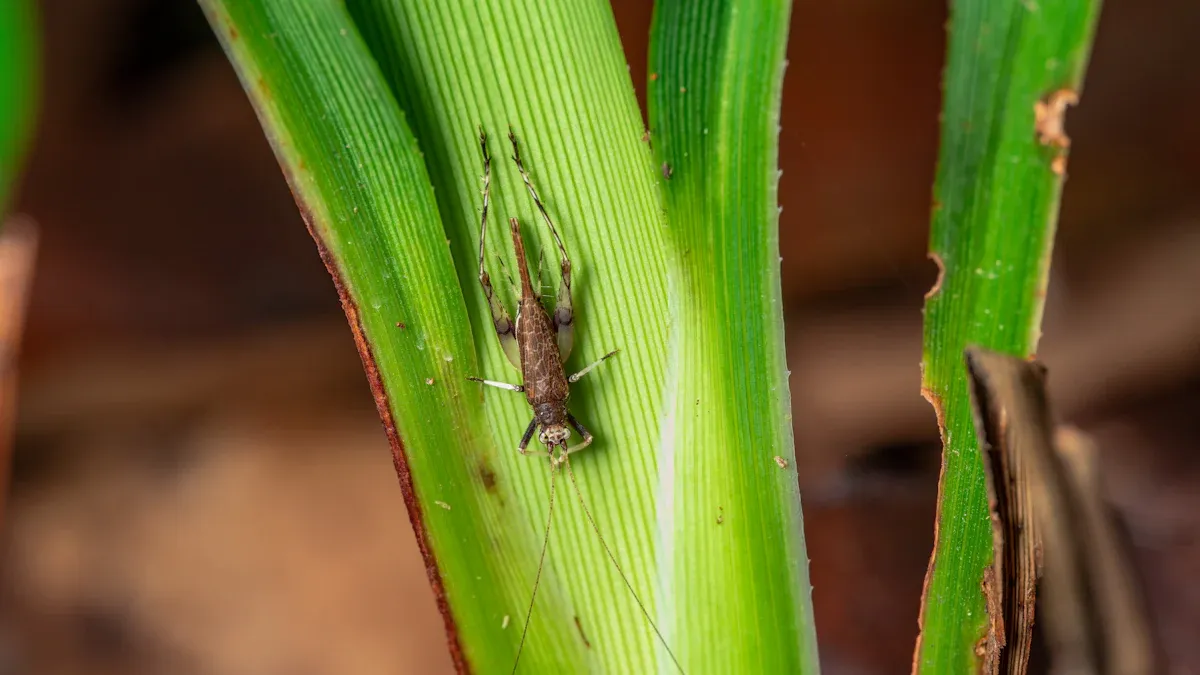
Identifying Moonshine Yarrow plant pests is crucial for maintaining their health. Common pests like aphids, mealybugs, and spittlebugs can cause significant damage if left untreated. These pests feed on your Moonshine Yarrow plants, leading to issues such as stunted growth and wilting. You must recognize these Moonshine Yarrow plant pests early to implement effective treatment and prevention strategies. Taking proactive steps can help ensure your plants thrive and remain vibrant.
Key Takeaways
Identify common pests like aphids, mealybugs, and spittlebugs early to protect your Moonshine Yarrow plants.
Look for signs of pest damage, such as yellowing leaves and sticky residue, to catch infestations quickly.
Use organic methods like insecticidal soap and neem oil for safe pest control that supports plant health.
Implement cultural practices like proper soil management and sunlight exposure to create a healthy environment for your plants.
Regularly monitor your plants and keep records of any pest activity to ensure timely intervention.
Common Moonshine Yarrow Plant Pests

Aphids
Aphids are small, soft-bodied insects that can significantly harm your Moonshine Yarrow plants. Adult Macrosiphoniella millefolii aphids measure between 2.1 to 3.6 mm in length. They typically appear green and have a waxy, powdery look. You can identify them by their spinal stripe on the abdomen and the antesiphuncular spots. The winged forms, known as alates, help spread the infestation. Males are easily recognized by their pinkish-red color.
These pests feed on the sap of your plants, draining essential nutrients. As they feed, they secrete a sticky substance called honeydew. This honeydew can lead to sooty mold growth, which can further stress your plants. Heavy infestations can distort leaves and stems, leading to stunted growth and wilting.
Mealybugs
Mealybugs are another common pest that targets Moonshine Yarrow plants. These pests are small, white, and covered in a waxy coating, making them easy to spot. They often cluster in groups on the stems and undersides of leaves. Like aphids, mealybugs feed on plant sap, weakening your plants over time.
Their feeding can lead to yellowing leaves and reduced vigor. In severe cases, mealybugs can cause leaf drop and even plant death. They also produce honeydew, which attracts ants and can lead to sooty mold growth. Regular monitoring and early intervention are crucial to managing mealybug infestations effectively.
Spittlebugs
Spittlebugs are less harmful than aphids and mealybugs but can still be a nuisance. You can recognize them by the frothy masses they create, which resemble spit. These masses protect the immature nymphs as they feed on plant sap. While spittlebugs generally cause minimal damage to ornamental plants, their presence can be distressing due to the unsightly appearance of their spit globs.
In some cases, if their numbers become excessive, they may require control measures. Their feeding can lead to stunted growth, especially in more sensitive plants. However, compared to aphids and mealybugs, spittlebugs are less likely to cause severe damage to your Moonshine Yarrow plants.
In addition to these pests, you should also be aware of spider mites and scale insects. Spider mites can create fine webbing on your plants, while scale insects appear as small, hard bumps on stems and leaves. Both can weaken your plants and require prompt attention.
Pest Damage Signs

Yellowing Leaves
One of the first signs of pest damage on your Moonshine Yarrow plants is yellowing leaves. This symptom often indicates that pests are feeding on the plant’s sap. You might notice:
Curled leaves or sticky residue, which suggests an aphid infestation.
Rusty, reddish, or orange spots on the leaves, signaling potential spider mite activity.
Yellowing leaves that worsen as the infestation progresses.
As the pests continue to feed, the leaves may become distorted and smaller. Flower buds may also fail to open, leading to a lack of blooms.
Other Symptoms
In addition to yellowing leaves, you should watch for other symptoms that indicate pest problems. For example, aphids can cause twisted and distorted foliage. You may also see smaller flower buds that struggle to develop. Mealybugs can lead to slowed growth and yellowing leaves, which may eventually result in the plant’s death if not addressed.
Spittlebugs, while less harmful, can cause slight crumpling of leaves. Their frothy masses can be unsightly, but they generally do not inflict lasting damage. However, if you notice any of these symptoms, it’s essential to act quickly to protect your Moonshine Yarrow plants from further harm.
Treatment for Moonshine Yarrow Plant Pests
Organic Methods
You can effectively manage Moonshine Yarrow plant pests using organic methods. These approaches are safer for the environment and can enhance the overall health of your plants. Here are some effective organic treatments:
Insecticidal Soap: This soap suffocates soft-bodied insects like aphids and mealybugs. Spray it directly on the pests, ensuring thorough coverage.
Neem Oil: Derived from the seeds of the neem tree, this oil disrupts the life cycle of pests. Mix it with water and spray it on your plants to deter aphids, mealybugs, and spider mites.
Diatomaceous Earth: This natural powder can be sprinkled around your plants. It damages the exoskeletons of insects, leading to dehydration and death.
Research supports the effectiveness of these organic pest control methods. For instance, studies show that organic farming and diverse cover crops enhance predator abundance, which can help control pests. Here’s a summary of relevant findings:
Study Title | Findings | Implications for Moonshine Yarrow |
|---|---|---|
Manipulating vineyard biodiversity for improved insect pest management | Organic farming and diverse cover-crops enhance predator abundance, affecting pest control. | Similar ecological principles may apply to Moonshine Yarrow, suggesting organic methods could be effective. |
Reducing the abundance of leafhoppers and thrips in a northern California organic vineyard | Maintenance of floral diversity reduced pest densities and increased predator populations. | This suggests that similar practices could be beneficial for Moonshine Yarrow plants. |
Enhancing plant diversity for improved insect pest management in Northern California organic vineyards | Plant diversity and summer cover crops improved biological control of pests. | This indicates that enhancing biodiversity could also support pest management for Moonshine Yarrow. |
Chemical Treatments
In cases of severe infestations, you may need to consider chemical treatments. These can provide quick relief but should be used with caution. Here are some recommended options:
Systemic Insecticides: These are absorbed by the plant and can kill pests that feed on it. Always follow the label instructions carefully to ensure safe and effective use.
Contact Insecticides: These kill pests on contact. They can be effective against aphids and mealybugs but may require multiple applications.
Professional Help
If your Moonshine Yarrow plants suffer from persistent pest problems, seeking professional help may be the best option. Pest control experts can assess the situation and recommend tailored treatments. They can also provide guidance on maintaining plant health and preventing future infestations.
By combining organic methods, chemical treatments, and professional assistance, you can effectively manage Moonshine Yarrow plant pests and keep your plants healthy and vibrant.
Prevention Strategies
Cultural Practices
To keep your Moonshine Yarrow plants healthy, you should adopt effective cultural practices. These practices create an environment that discourages pests and promotes plant vitality. Here are some key strategies:
Soil Management: Moonshine Yarrow thrives in lean, dry to medium moisture, well-drained sandy loams. Avoid heavy clays and rich, moist soils. Overly fertile soils can lead to weak plants that are more susceptible to pests.
Sunlight Exposure: Ensure your plants receive full sun. Moonshine Yarrow prefers bright light, which helps strengthen its defenses against pests.
Watering Techniques: Water your plants properly. Overwatering can lead to root rot, making them more vulnerable to pest infestations. Aim for a balance that keeps the soil moist but not soggy.
By implementing these cultural practices, you can create a robust environment for your Moonshine Yarrow plants, reducing the likelihood of pest problems.
Monitoring Techniques
Regular monitoring is essential for early detection of pests on your Moonshine Yarrow plants. Here are some effective techniques:
Routine Inspections: Check your plants weekly for signs of pests. Look for common pests like aphids, spider mites, and leafhoppers. Early detection allows for quicker intervention.
Record Keeping: Maintain a log of your observations. Note any changes in plant health or pest activity. This information can help you identify patterns and take action before infestations escalate.
Use of Sticky Traps: Place yellow sticky traps near your plants. These traps attract flying pests, allowing you to monitor their presence and population levels.
By staying vigilant and monitoring your plants regularly, you can catch pest problems early and take appropriate action. This proactive approach not only protects your Moonshine Yarrow plants but also contributes to long-term pest management success.
In summary, identifying and treating pests on your Moonshine Yarrow plants is essential for their health. You learned about common pests like aphids, mealybugs, and spittlebugs. You also discovered signs of damage, treatment options, and prevention strategies. By taking proactive measures, you can protect your plants and ensure they thrive. Remember, regular monitoring and prompt action can make a significant difference in maintaining the vitality of your Moonshine Yarrow. 🌼
FAQ
What are the signs of a pest infestation on Moonshine Yarrow plants?
You can spot a pest infestation by looking for yellowing leaves, distorted growth, or sticky residue on the leaves. Additionally, check for visible pests like aphids or mealybugs on the stems and undersides of leaves.
How can I prevent pests from attacking my Moonshine Yarrow plants?
To prevent pests, maintain healthy soil, provide adequate sunlight, and avoid overwatering. Regularly inspect your plants and remove any debris that may harbor pests. These practices create a less inviting environment for pests.
Are organic treatments effective for controlling pests?
Yes, organic treatments like insecticidal soap and neem oil can effectively control pests. These methods are safer for the environment and can help maintain the health of your Moonshine Yarrow plants without harsh chemicals.
When should I seek professional help for pest issues?
If you notice persistent pest problems despite your efforts, consider seeking professional help. Experts can assess the situation and recommend tailored treatments to protect your Moonshine Yarrow plants effectively.
Can pests harm the overall health of my Moonshine Yarrow plants?
Yes, pests can weaken your Moonshine Yarrow plants by draining nutrients and causing stress. This can lead to stunted growth, reduced blooms, and even plant death if infestations go untreated. Regular monitoring is essential to prevent severe damage.

